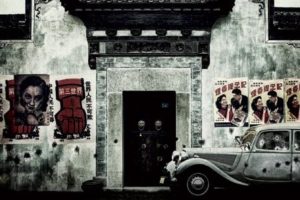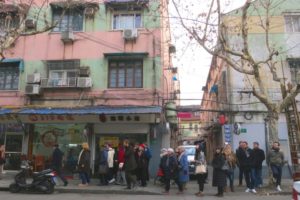The Asian Art Deco Alliance, an association that raises awareness of and works to preserve Asia’s Art Deco heritage, was formed by The Pangaea Society in the wake of the 2015 World Congress on Art Deco in Shanghai. Shanghai Art Deco, a proud founding member of the Alliance, recently sat down with the founders to find out more about the Asian Art Deco Alliance and the benefits of becoming a member.
What’s the backstory behind the Asian Art Deco Alliance?
Art Deco is a global phenomenon, but the current dialogue is Eurocentric — the general public only seems to be aware of European or American examples. The Alliance seeks to change that.
The Pangaea Society’s goals are to preserve and promote art, culture, and history, and our particular interest in Asian Art Deco led us to found the Asian Art Deco Alliance in 2016. Through conferences, dialogues, and networking, we hope to raise awareness of the rich Art Deco traditions throughout our region, and to preserve and protect the tumultuous history of the 1930s-1950s.
What distinguishes the Art Deco of Asia?
While Art Deco traces its origins to Europe, its spread to Asia created some of the most spectacular examples of the style. In China, for example, architects such as Robert Fan, Poy Gum Lee, and Dong Dayou created a genre that was both Asian and modern. These men themselves are examples of an east-meets-west fusion – Western-educated Chinese architects who returned to China to create a unique Chinese Art Deco style.

The Chinese YMCA, Shanghai, designed by Robert Fan, Zhou Shan and Poy Gum Lee in the Chinese Art Deco style.
Asian Art Deco draws on Art Deco themes, often with an Asian architectural vocabulary. From portholes to pagodas, ziggurats to zig-zags, you can see how a more globalized world was beginning to form in the 1930s through this style of blended architecture.
Asian Art Deco now serves as physical evidence of this early form of globalization. The impressive monuments still standing remind us of that politically tumultuous era, helping us understand not just the past, but also the present and the future.

Filipino flora on a window in Cebu, the Philippines. Photo: Estan Cabigas, 2016
Who can join the Alliance, and what are the benefits of membership?
Societies in Asia – architectural, heritage, and cultural – that promote Art Deco are strongly encouraged to join. Individuals with a passion for and a dedication to Asian Art Deco are also welcome.
Platform for networking: Our Alliance provides a platform for members to easily network and organize with other Art Deco aficionados in Asia. Members can attend our conferences, and host one in their own cities for others to attend!
Access to international organizations: Joining the Alliance automatically grants access to the Pangaea Society, a cultural organization that will assist member societies in preservation efforts. The Alliance will soon join the International Coalition of Art Deco Societies (ICADS), which allows member societies to host the prestigious World Congress on Art Deco, bringing the opportunity to showcase their country’s Art Deco heritage to Art Deco aficionados from around the globe.
Marketing assistance: Alliance members have access to the services of our PR and marketing partner, AsiaMedia, for assistance and advisory in marketing efforts such as websites, promotions, and social media, for a nominal fee.
For more information on membership and to join, click here.
If you only have time for three Art Deco cities in Asia, which ones should they be – and why?
Readers of this blog are well aware that Shanghai, of course, has the best examples of Art Deco in Asia — you really can’t talk about Art Deco in Asia without talking about Shanghai. Not only does the city have one of the largest surviving collections of Art Deco in Asia, as Asia’s most cosmopolitan city between the wars, Shanghai drew architects from a host of countries, resulting in the largest international collection of Art Deco in the world. The city also has a dazzling variety of types of Art Deco, from vernacular architecture in the lanes, to Chinese Art Deco, American-style skyscrapers, modernist villas, and even “Deco Echo”, 21st century Art Deco.
Aside from Shanghai, other cities that are must-sees in Asia: Bombay, Singapore and Manila.
Bombay: In the 1930s and 40s, Bombay was India’s Shanghai: glamorous, progressive and a haven for Art Deco.
Today, “Bombay Deco” is rife throughout the modern city, in residential, commercial, and civic architecture. Designed by the first generation of Indian architects trained in the western architectural style, Bombay’s Art Deco buildings are classic examples of tropical Art Deco, yet often with features and motifs that are unmistakably Indian. It’s an impressive collection that should be on any Art Deco lovers list.
Singapore: Behind Singapore’s ultra-modern skyline and historic neoclassical buildings lies a splendid stash of tropical Art Deco, designed by both British architects and local ones.
Singapore Deco is found in residences, cinemas, commercial buildings, airports and railway stations, and includes some terrific examples of vernacular Art Deco in the form of the Singapore shophouse as well as Chinese Art Deco. Best of all, Singapore’s highest-density Art Deco enclaves are off the beaten path, in rare parts of the city that remain untouched.
Manila: The Philippines capital is a unique destination for Art Deco aficionados and tomb raiders alike.

The Lopez de Guia Cemetery, La Loma Catholic Cemetery, Manila. Photo: Ivan Man Dy, Old Manila Walks.
Filipino architects trained in the U.S. and Europe created a host of lavishly Art Deco apartments, cinemas, churches, universities, civic buildings and sumptuous mansions. Oh, and the mausoleums! Forget the Pharaohs: Manila’s mausoleums feature Chinese motifs on Art Deco vaults. East Asian burial traditions in the city blend seamlessly with stylized Art Deco enclosures for the dead.
What’s next?
Next on our repertoire? In 2017, we plan to host a conference on the Qipao, a modern Chinese dress that became all the rage in the 30s. It will take place in Shanghai, stay tuned for dates!
On our travel list:
Bandung, Indonesia
During the Dutch colonial era, Bandung was a hill station known as “the Paris of Java”, featuring cooler temperatures, tea plantations, and luxurious Art Deco villas, hotels, and civic buildings designed by Dutch architects. We have a personal mission there: join us as we raid the (Art Deco, we hope!) tomb of our founder’s ancestors and take their troubled ashes back home to Amoy!
Xiamen, China
This treaty port city in Fujian province, formerly known as Amoy, was the ancestral home of some of the most successful immigrants to the Southeast Asian Chinese diaspora. Many returned, and built Art Deco shophouses and villas in the city. Here, we’re on the trail of Art Deco and soy sauce: Xiamen is where a diplomatic marriage between the city’s two soy sauce barons created the Amoy canning corporation, changing the culinary landscape of Southeast Asia forever. (Was there an Art Deco factory? Stay tuned!)
Phnom Penh, Cambodia
Art Nouveau and Art Deco once thrived in this former French colony, the latter created by French architects inspired by the Paris Exposition of 1925 that gave Art Deco its name. Symbolizing modernity, the style remained popular into the 1950s, and as Phnom Penh continues on its road to recovering from decades of war and terror, the city’s treasure trove of Art Deco just may be the key to its rebirth. Join us in finding out how!
To learn more on the Asian Art Deco Alliance and keep up with their news, visit their website, www.asianartdecoalliance.org.









Most Commented Posts